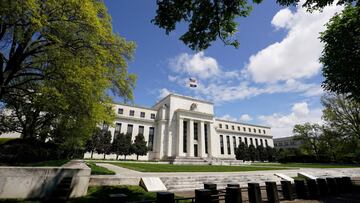What is Fed tapering and how could it affect new stimulus check?
Minutes of the Fed's September meeting confirmed that a tapering of stimulus is all but certain to start this year. But what does that mean in practice?


Back in March 2020, the Federal Reserve chose to cut short-term interest rates to zero following the massive economic impact seen from the covid-19 pandemic. We also saw it restart quantitive easing, with large-scale asset purchases, and from June last year this resulted in a monthly amount of Treasury and agency mortgage-backed security bonds to the value of $80 billion and $40 billion respectively. More than $4 trillion has been added to the balance sheet.
As the economy stabilised and then grew stronger across 2021, much of the talk has been about slowing the pace of this purchasing, also known as ‘tapering’.
Related news:
- What if I miss the Medicare deadline?
- Which state has the highest SSI payment?
- IRS asking for stimulus money to be returned
- Who needs Medicare Part A, B, C and D?
- Fourth installment of 2021 Child Tax Credit on Friday
Understanding the Fed’s tapering
It’s worth remembering that the reason for the quantitive easing was to provide the US economy with monetary stimulus. By reducing interest rates over the longer term, borrowing - both for business dealings and mortgages - became cheaper, and the Fed hits the supply of government debt and mortgage-backed bonds across the markets. A common reaction when there is a crisis like the one faced in 2020.
Although the overall balance sheet of the Fed is not made smaller by the tapering, what it does do is slow the speed of its growth. There will inevitably come a point, however, when they’ll likely allow some maturing securities to ‘run off’ the balance sheet, and by not actively replacing them with reduce the size of the balance.
The Fed dampens speculation over tapering. Presented by @CMEGroup pic.twitter.com/NqhEorcrfo
— Bloomberg Quicktake (@Quicktake) October 14, 2021
Latest tapering position and possible impact
Although the tapering being discussed will happen, there are still various disagreements about when and how this should take place. At the end of August the Fed’s chair, Jerome Powell, said:
“The timing and pace of the coming reduction in asset purchases will not be intended to carry a direct signal regarding the timing of interest rate lift-off, for which we have articulated a different and substantially more stringent test.”
A hawkish Powell has since stated that the official decision on tapering could be seen in November with actions quickly on the back of it. He expects that this would then see the end of the process “sometime around the middle of next year.”
The US dollar had rallied against its major currency peers since early September on these expectations that the US central bank would tighten monetary policy more quickly than previously expected amid the improving economy and surging energy prices. And despite those minutes of the Fed's September meeting confirming that a tapering of stimulus is all but certain to start this year, policymakers are sharply divided over inflation and what they should do about it.
#USDJPY is going to reach the major resistance area - worth to notice [Risk/reward]#tapering #Fed pic.twitter.com/DOrUHDKCeq
— Trading For A Living (@TradingFALiving) October 14, 2021
Analysts said investors who were long dollars had been squeezed out of their positions in the past few days, and inflation data did not support a further rise in the currency.
Related stories
"The lack of any upside surprise in US CPI [consumer price inflation] data and confirmation of existing expectations on Fed tapering in the minutes provided no catalyst for additional USD buying and hence the sell-off," said MUFG analyst Derek Halpenny.
The expected bottom line is that as the economy continues to recover from the hard pandemic hit, Americans should start to feel the benefit in terms of jobs and other measures. That will see the chances of a generic fourth stimulus check further lessen.

